Daniel Widrig uses DIY 3D printing process to produce pixellated stool
London architect and designer Daniel Widrig has printed a stool from a mixture of sugar, plaster and Japanese rice wine.
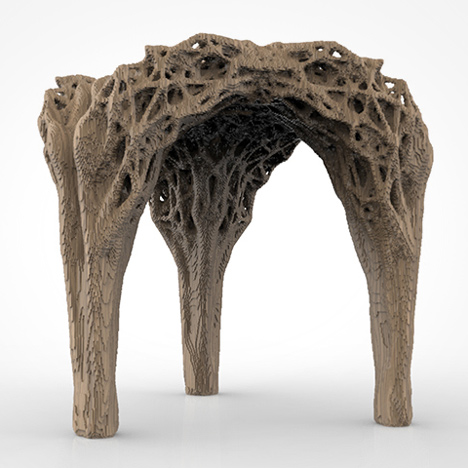
Widrig designed the shape of the Degenerate Chair using techniques typically employed in the creation of complex three dimensional characters for movies and computer games.
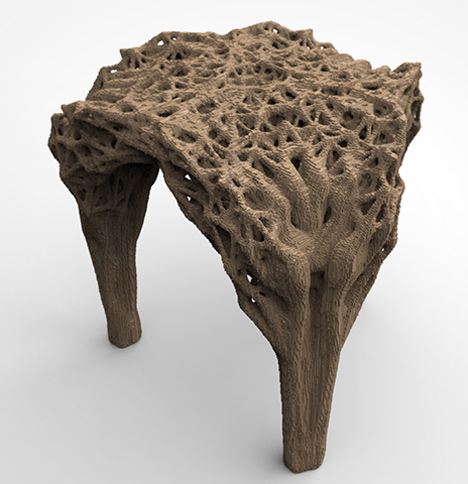
The shape of the stool was first modelled using 3D tiling software and optimised by removing material where it wasn't structurally essential, before the resulting form was broken down into a high-resolution array of three dimensional pixels, or voxels.
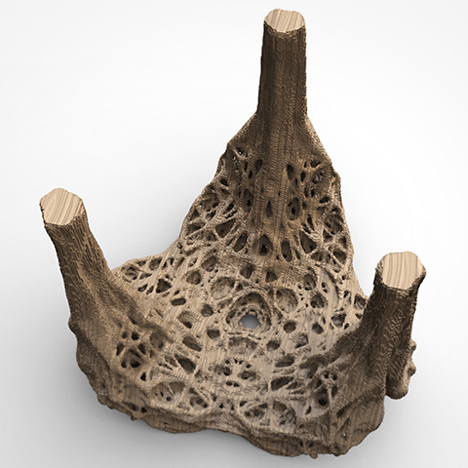
When the 3D printing partner Widrig had lined up to produce the stool using an industrial stereolithography printing process pulled out of the project, he turned to an open-source recipe that combines plaster, sugar and sake to create a material that can be used in standard 3D printers.
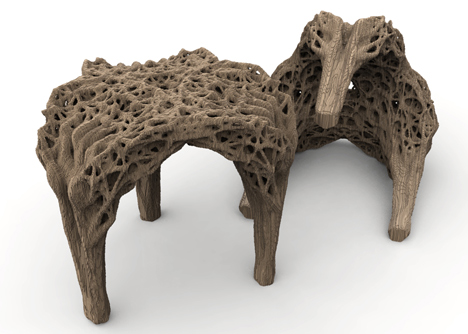
"The recipe we used is based on existing research but we developed it further, because the original recipes usually result in parts that are too rough and fragile for high resolution prints," Widrig told Dezeen. "To our knowledge it is the first time a 1:1 working product of that scale has been printed this way."
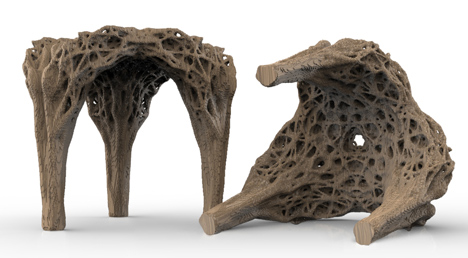
Widrig's studio used its own Z Corp machine to print the stool in sections that were limited to the dimensions of the printer. The parts were then assembled to create a fully functioning piece of furniture.
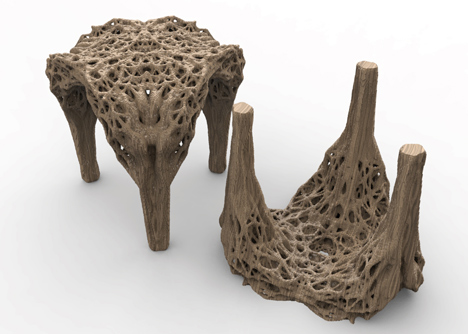
The designer added that the process results in huge cost savings, but is discouraged by the manufacturers of 3D printers who prefer users to purchase materials direct from them. "To give an idea of comparative cost, one litre of original binder is around £200, while a litre of Japanese rice wine is £8," he pointed out.
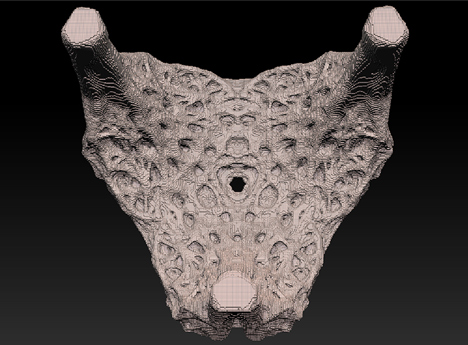
With further research, Widrig believes the organic binding material could offer an affordable alternative to existing expensive systems. "We are currently developing this process further since, in our opinion, it is the only way to 3D print for free," he claimed.
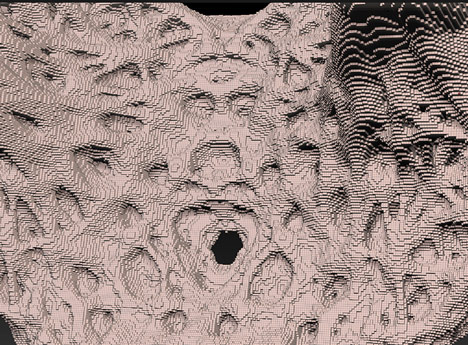
The furniture is on show at an exhibition about the relationship between digital architecture and the sciences called Naturalising Architecture at the FRAC Centre in Orléans, France, until March and has recently been added to the centre's permanent collection.